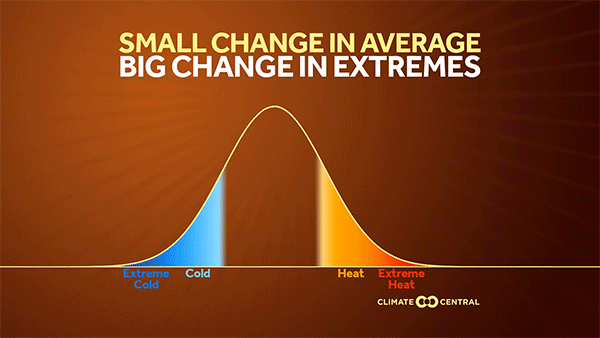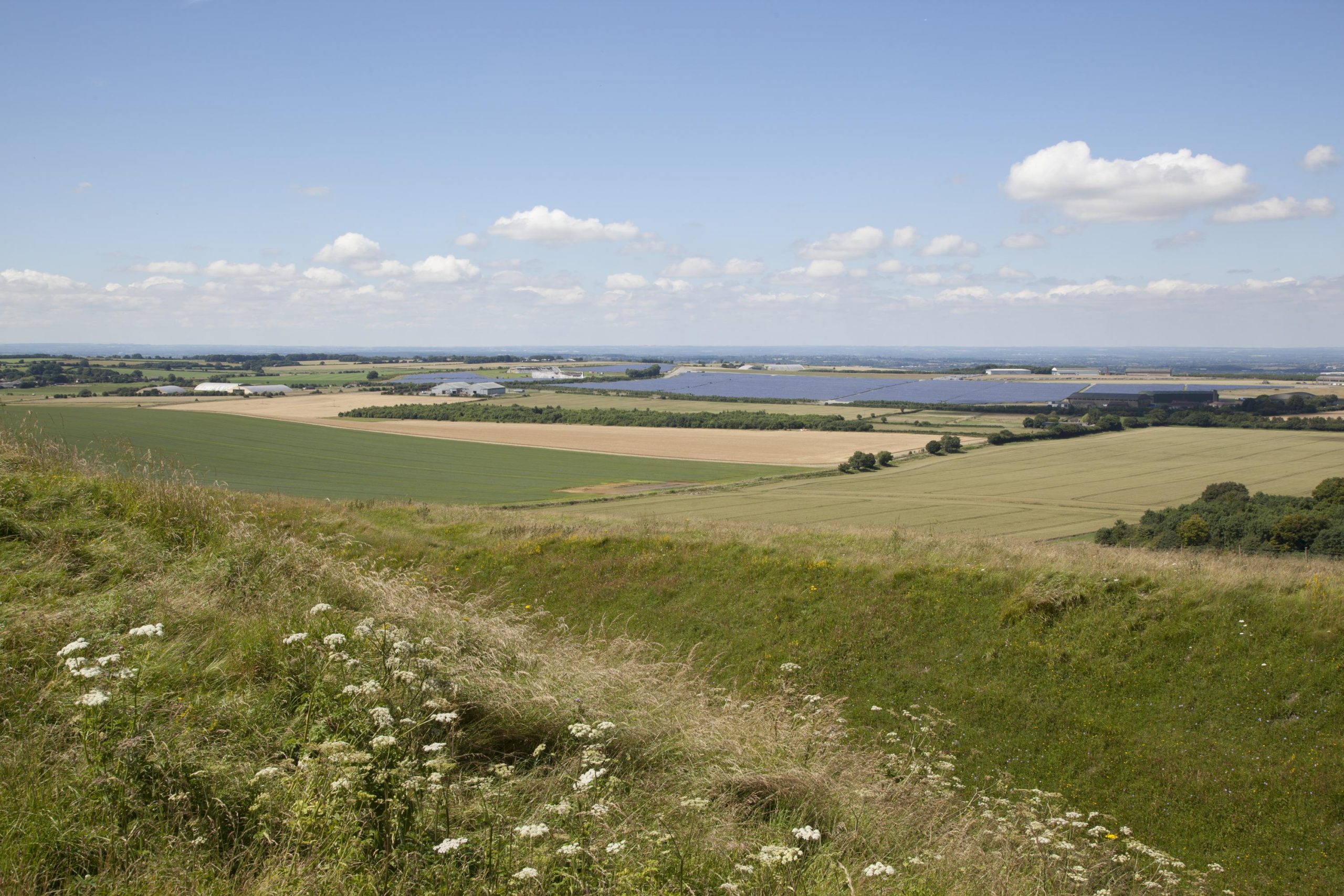The past year has seen ice sheets melt, floods, droughts, fires, and other examples of extreme weather which have brought home the reality of climate change.
These extremes are by no means the worst that can happen. ‘Continued Amazon deforestation, combined with a warming climate, raises the probability that this ecosystem will cross a tipping point into a dry state during the twenty-first century,’ according to the recent sombre assessment of our planet’s future from the UN’s Intergovernmental Panel on Climate Change (IPCC), a group of scientists whose findings are endorsed by the world’s governments.

Tipping points are critical thresholds where small changes can trigger abrupt shifts in the state of parts of the global climate system, with potential impacts that cannot be reversed and that extend well beyond the affected region.
Evidence of earlier climates shows the Earth may abruptly ‘tip’ from one climate to another in a comparatively short time, sometimes in as little as a decade.
Awareness of climate tipping points has grown in recent years, in no small part thanks to the work of climate scientist Tim Lenton, director of the Global Systems Institute at the UK’s University of Exeter. Prof Lenton is also one of our lead advisors on Amazônia an exhibition presented by Sebastião Salgado that showcases over 200 powerful black-and-white photographs that celebrate the indigenous peoples and varied landscapes of the Brazilian rainforest.

When it comes to the Amazon, climate scientists are looking for early warning signals of the tipping point in the rainforest. There are ‘lots of worrying signals, a critical slowing down of the forest’s ability to recover from perturbations,’ said Prof Lenton. The fear is that, within a few decades, deforestation may trigger an abrupt transition of the tropical rainforest into savanna, releasing additional greenhouse gases to accelerate warming.
In Science Advances, Thomas Lovejoy, of George Mason University, and Carlos Nobre, from the Institute of Higher Studies of the University of São Paulo, warned that the loss of 20 to 25% of the rainforest could send the Amazon to a point of no return.
A Brief History of Tipping Points
A key moment in the history of tipping point science came in 2008 when Lenton co-authored an influential Proceedings of the National Academy of Sciences paper that identified nine tipping points and ranked them by their near-term likelihood of occurring.
One tipping point identified was the melting of Arctic sea ice, where increased summer melt means more sunlight is absorbed, heating up the ocean, resulting in more ice melting the next summer, and so on. Another was the collapse of the Atlantic ‘thermohaline circulation’, where surface currents of warm seawater in the Atlantic flow north, while currents of colder, deep waters from the North Atlantic flow south, which is important for temperature regulation in the Atlantic region.

In 2008, tipping points were considered likely only if global warming exceeded 5 °C above pre-industrial levels. Since then, evidence has emerged that tipping points could be exceeded even between 1 and 2 °C of warming. More than half of the climate tipping points identified are now “active”, Lenton warned two years ago in an article in the journal Nature.
Another reassessment is now underway that suggests the threshold is closer to 1 °C, he said, ‘which of course we have already passed, and are witnessing the collapse of part of the West Antarctic ice sheet already, and we can’t rule out an irreversible shrinkage of ice in Greenland.’
‘Every time we reassess tipping points, we raise the risk flag even higher,’ said Prof Lenton. ‘We think the temperature thresholds are nearer than before.’
Tipping Point Cascades
As scientists have underestimated the risks of unleashing irreversible changes, Lenton and his colleagues have called for urgent action to reduce greenhouse gas emissions to prevent key tipping points. The fear is that one tipping point could trigger another, in a domino-like cascade.
For example, ice loss in the Arctic is warming northern high latitudes and triggering other tipping elements in that region, such as permafrost degradation, Boreal forest dieback and melt of the Greenland ice sheet. Ice sheet meltwater and warming is slowing down the Atlantic Ocean circulation, and that shifts the band of monsoon rainfall all around the tropics.

A cascade of tipping points could take the Earth system to even higher temperatures and to a new, less habitable, ‘hothouse’ climate state. This would render large parts of Earth uninhabitable. ‘When it comes to multiple tipping points, I am getting more concerned,’ Lenton said. ‘We now have more physical evidence that cascading interactions are real.’
Feedback and Tipping Points
It is no accident that Prof Lenton is inspired by James Lovelock, a great friend of the Science Museum Group (which has collected his laboratory and archive), who highlighted mechanisms by which the Earth system has been stabilised by negative feedbacks throughout Earth history in his Gaia hypothesis.

Negative feedback is what stops central heating from cooking the occupants of a house: above a threshold temperature, a thermostat turns off the heating. Clouds act in a similar way – when the Earth warms, more clouds form to reflect more sunlight into space.
Lenton is concerned by positive feedback mechanisms that could tip the climate system into a new configuration. Melting ice reflects less sunlight so that even more heat is absorbed, for example.
However, we tend to think in a linear way: the Earth gets a little warmer so the climate changes by a similar degree. But ‘society must not be lulled into a false sense of security by smooth projections of global change,’ said Lenton. The climate is a non-linear system, where small changes can have huge effects which are irreversible so that our homeworld could settle into a quite different climate pattern from today. When it comes to a hothouse Earth scenario, that would mean food and water shortages, hundreds of millions of people being displaced by rising sea levels, unhealthy and unliveable conditions, and coastal storms.

However, there is one caveat to forecasting tipping points. The extreme warming in the US northwest this summer was not predicted by existing climate models, suggesting our understanding of the global climate system is not complete, said Prof Lenton. ’It has got a lot of us scratching our heads,’ adding that he is concerned that this extreme warming signals the dawn of a new climate regime.
Positive tipping points
The good news is there are other, helpful, kinds of tipping points. Lenton, along with Simon Sharpe, a Deputy Director in the UK Cabinet Office COP 26 unit, has identified those tipping points that could rapidly cut carbon emissions.
They highlight two examples where policy interventions have already triggered positive tipping points at a national scale. For each, they explain how concerted actions could turn these into “cascades” that change the global economy. ‘I am really interested in trying to identify these reinforcing feedbacks that we might make strong enough to accelerate the change we need, such as decarbonising the global economy by a factor of five compared with current rates,’ said Prof Lenton.
Economies of scale are important. When it comes to electric vehicles, for example, a local positive tipping point began in Norway in 1995. Lead singer of the 1980s band A-ha and the head of the Norwegian environmental group Bellona went on a road trip in an electric Fiat Panda and refused to pay road tolls, parked illegally and ignored penalties until the car was impounded. The stunt attracted huge publicity and soon after, electric vehicles were exempted from tolls along with several other incentives that have, over the years, helped make Norway the country with the world’s highest per-capita electric vehicle ownership.

A global positive tipping point will come when electric vehicles cost the same to manufacture as conventional cars. China, the EU, and California are together responsible for half the world’s car sales and when acting together, could shift investment throughout the global industry, increasing electric vehicle production and decreasing costs. This would trigger a global tipping point away from diesel and petrol which in turn would drive the evolution of greener and cheaper batteries that would aid decarbonisation in the power sector.
In recent years, positive tipping points have helped the UK decarbonise its power sector faster than any other large country. The carbon tax together with an EU emissions scheme made gas cheaper than coal. Combined with increasing renewable energy generation, this tipped coal into unprofitability and led to the irreversible decommissioning of coal plants.
A global positive tipping point could be reached when the cost of coal plants exceeds that of wind and solar plants worldwide. Decarbonising global power generation would in turn accelerate decarbonisation of transport, heating and cooling, and industry.

These positive tipping cascades are by no means inevitable, said Lenton. Government action will be required. However, the beauty of policies aimed at social tipping points is that thanks to reinforcing feedbacks, a relatively small number of initial actions could catalyse large changes at the global scale.
Of all the examples, he said the most iconic is the protests of Greta Thunberg before the Swedish parliament which inspired others – through social contagion – to call for action to decarbonise the planet. ‘Her protest makes it incrementally easier for the next person to join them, and so on.’
Tipping points: the bigger picture
The IPCC, having spent some years talking about ‘large scale climate discontinuities’, today talks about tipping points, Lenton notes with some satisfaction. ‘Hopefully, there will be more on tipping points from its Working Group II report – Impacts, Adaptation and Vulnerability – which is expected next spring’, he said.
Economists also realise that tipping points will contribute significantly to the cost of global heating – increasing the economic cost of damages by about 25 per cent, with a 10 per cent chance of the tipping points at least doubling the costs of climate change impacts, and a 5 per cent chance of them tripling costs. Though, based on his work, Lenton believes this study is an underestimate.
Even politicians are aware of climate flips. At a Science Museum Group Climate Talk between former Prime Minister Tony Blair and Special Presidential Envoy for Climate John Kerry, Kerry talked of the ‘imperative of moving faster’ to counter climate change because of concerns about tipping points.
Find out more about climate change and tiping points in this animated video series.
3 comments on “Earth at a tipping point”
Comments are closed.

Nice blog, Roger.
Nice blog, Roger
This is an excellent article that illustrates the extent of concern we should be directing at resolving dangerous intrusions into our natural world.